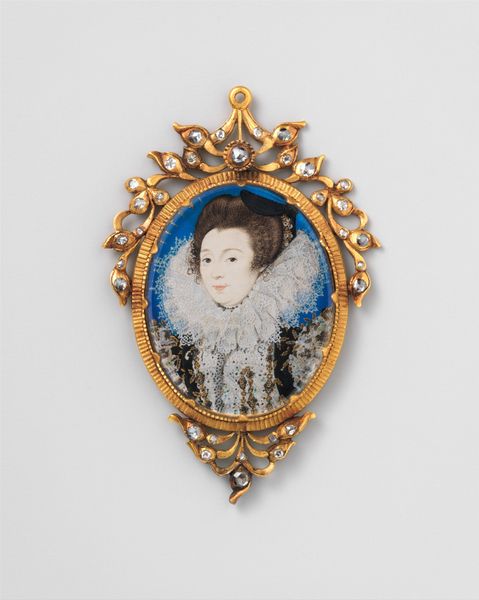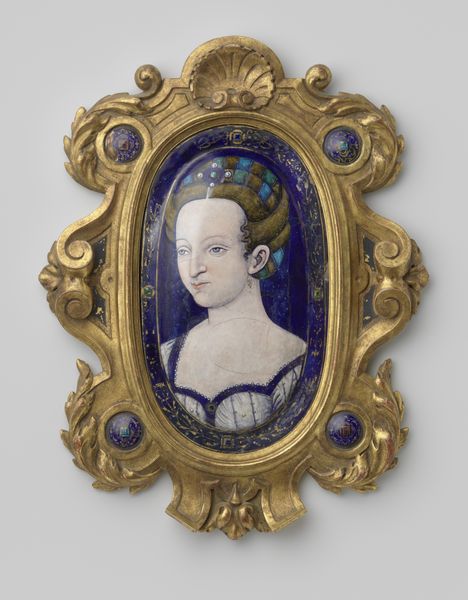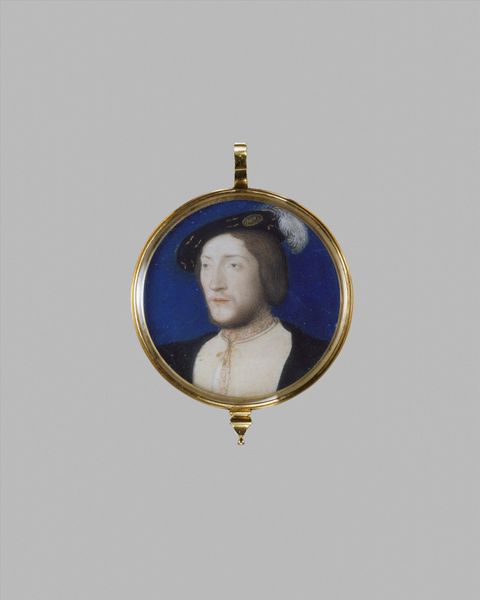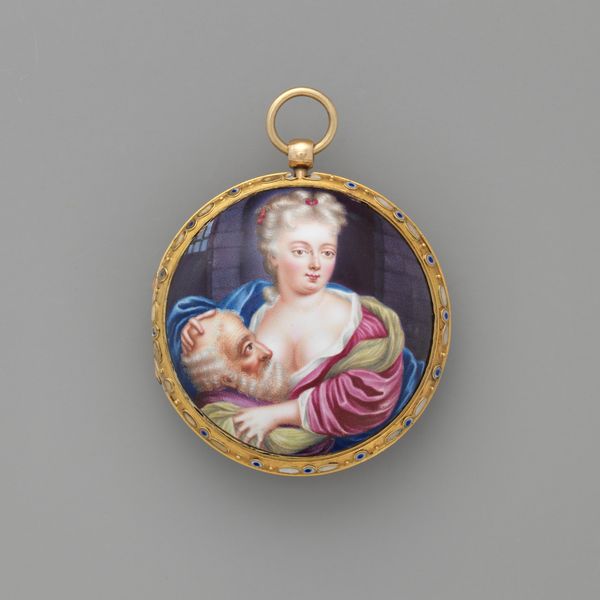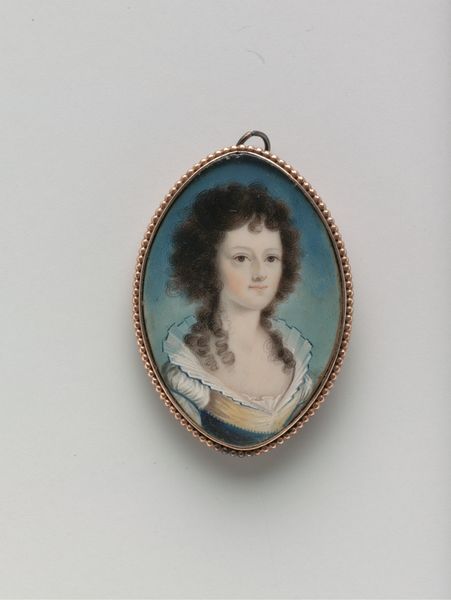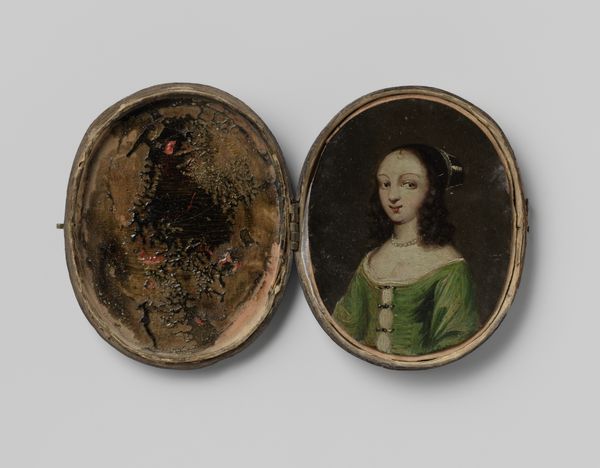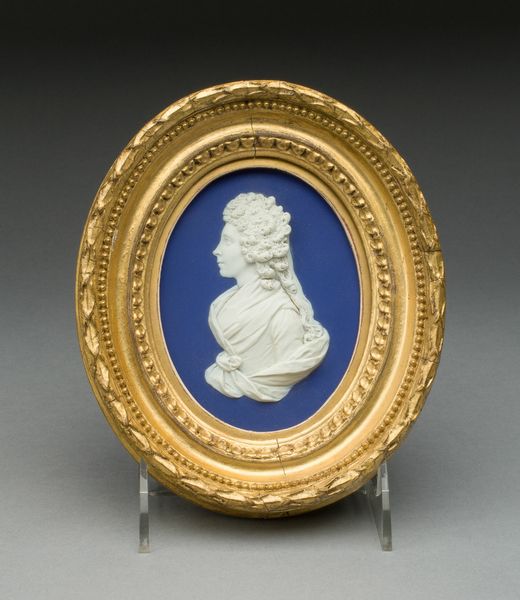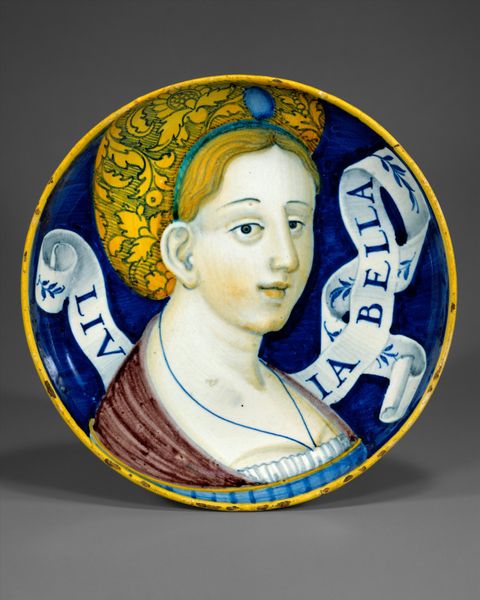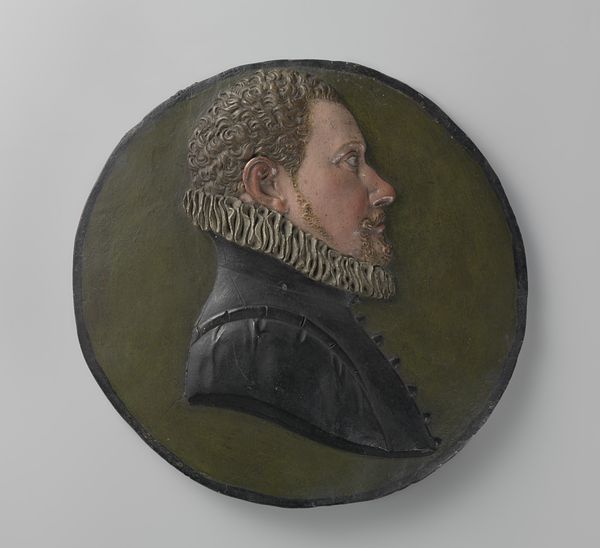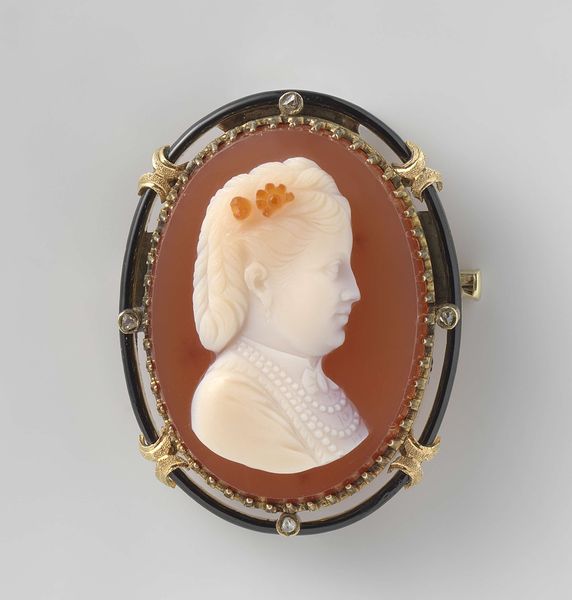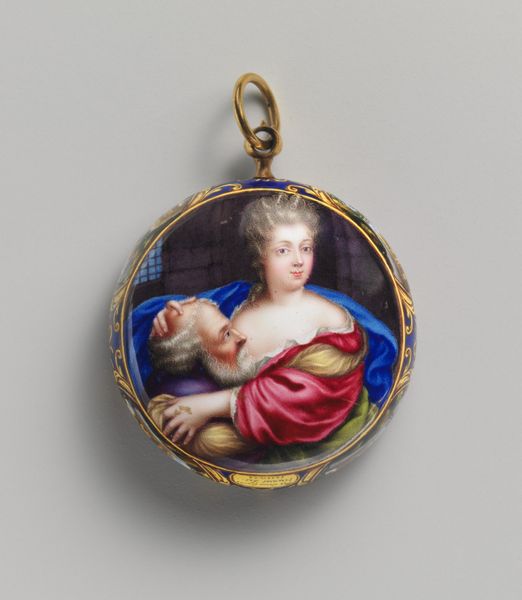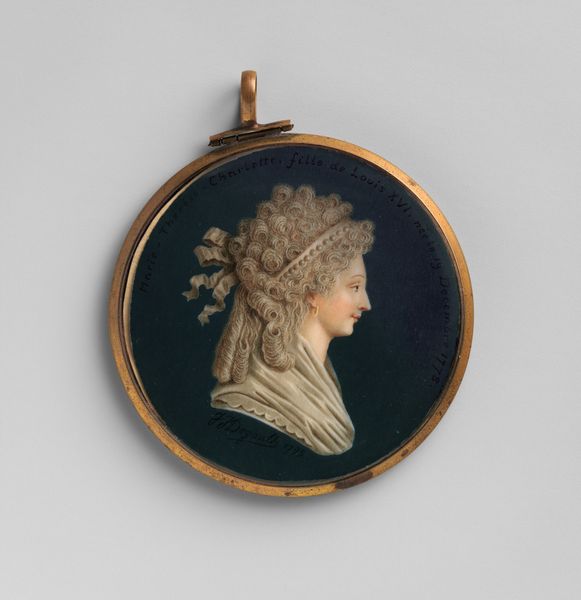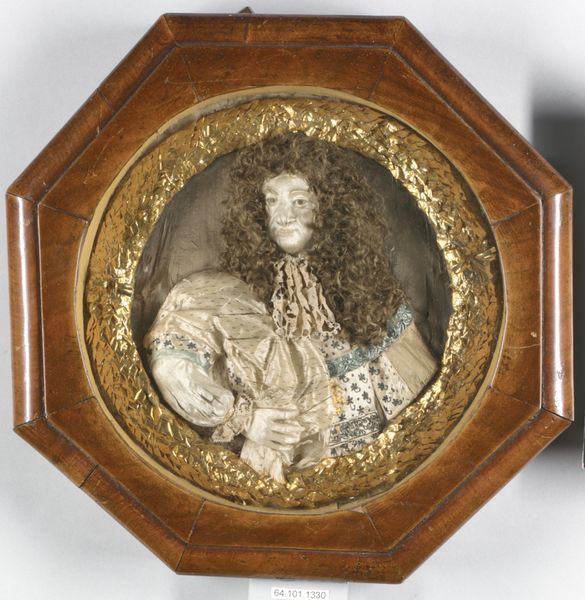
painting, oil-paint
#
portrait
#
painting
#
oil-paint
#
11_renaissance
#
miniature
Dimensions: height 5.3 cm, width 4.1 cm, height 5.5 cm, width 4.2 cm, depth 0.8 cm
Copyright: Rijks Museum: Open Domain
Editor: This small oil painting, created sometime between 1575 and 1617 by Isaac Oliver, is called "Portret van een vrouw in maskeradekleding als Flora" - or "Portrait of a Woman in Masquerade Costume as Flora." What immediately strikes me is the almost dreamlike quality, perhaps owing to the bright blue backdrop. How do you interpret this work? Curator: Well, I immediately see how it uses Flora, the Roman goddess of flowers and springtime, as a symbolic language. The flowers themselves aren’t just decorative; they represent rebirth, beauty, and a specific kind of idealized femininity. What do you notice about how she’s posed, how she looks at us? Editor: She seems very self-aware, almost challenging. Not at all demure. Curator: Exactly! It defies the traditional demure pose expected of women in portraits. This masquerade suggests a conscious performance, a playful engagement with identity. Consider the context – such portraits were often commissioned by the wealthy, acting almost as early versions of social media profiles. It reveals the sitter's desired self-image, rather than a plain depiction of reality. Do you think that the artist made any other decisions to show the status of the subject? Editor: Absolutely. The jewels, the elaborate dress… they are declarations of wealth and status. But putting on the guise of Flora—does it signify something beyond wealth? Curator: The choice is deliberate. Flora symbolizes fertility and renewal. It speaks to ideas of inherited nobility and potentially points to dynastic aspirations of the sitter and her family. She isn't merely wealthy; she is associating herself with an idealized, almost mythological narrative. This cultural memory is powerful. What lasting impressions do you gather from this image? Editor: The use of symbols adds layers of meaning that might not be immediately apparent, revealing so much more about the sitter. It has inspired me to dig deeper into understanding how these historical images influence us even today. Curator: Precisely. The symbolic language in these early modern portraits laid groundwork for how we still convey meaning through imagery now, even with filters and avatars. It’s fascinating to consider what this "Flora" portrait reveals about continuity in image-making!
Comments
No comments
Be the first to comment and join the conversation on the ultimate creative platform.
